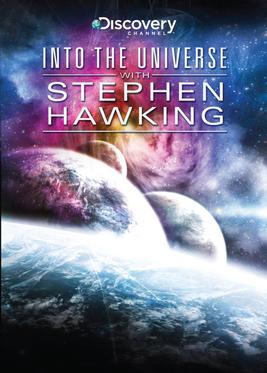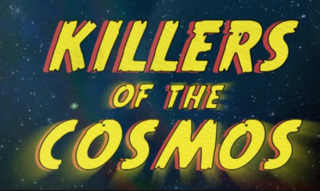
Ann Druyan is an Emmy and Peabody Award-winning American documentary producer and director specializing in the communication of science. She co-wrote the 1980 PBS documentary series Cosmos, hosted by Carl Sagan, whom she married in 1981. She is the creator, producer, and writer of the 2014 sequel, Cosmos: A Spacetime Odyssey and its sequel series, Cosmos: Possible Worlds, as well as the book of the same name. She directed episodes of both series.

Michio Kaku is an American theoretical physicist, futurist, and popularizer of science. He is a professor of theoretical physics in the City College of New York and CUNY Graduate Center. Kaku is the author of several books about physics and related topics and has made frequent appearances on radio, television, and film. He is also a regular contributor to his own blog, as well as other popular media outlets. For his efforts to bridge science and science fiction, he is a 2021 Sir Arthur Clarke Lifetime Achievement Awardee.

Physics World is the membership magazine of the Institute of Physics, one of the largest physical societies in the world. It is an international monthly magazine covering all areas of physics, pure and applied, and is aimed at physicists in research, industry, physics outreach, and education worldwide.

Tommy & Oscar is an Italian animated television series co-created by Max Alessandrini and Iginio Straffi, with graphic creation by Pietro Dichiara and Carlo Rambaldi. It was the first major project from Rainbow, which later became a much larger television studio co-owned by the US company Viacom.
Cosmic Odyssey is a 2002 Canadian documentary television series about the cosmos, created by Avanti Pictures, narrated by William Shatner, and produced by Soapbox Entertainment for The Discovery Channel. In 2003, Schlessinger Media released the series in VHS video format. As of 2007, the series is syndicated on The Science Channel.

The American Institute of Physics (AIP) instituted their Science Writing Award to "promote effective science communication in print and broadcast media in order to improve the general public's appreciation of physics, astronomy, and allied science fields." The winner receives $3000, and an engraved Windsor chair. The award is given in three broad categories: 1) science writing, 2) work intended for children, and 3) work done in new media. The AIP stopped issuing awards to three categories: 1) work by a professional journalist 2) work by a scientist, and 3) broadcast media

Mojacko is a shōnen manga series created by Fujiko Fujio and later Fujiko F. Fujio. It was first serialized in Kodansha's Weekly Bokura Magazine in 1969 to 1970, for 35 chapters, eventually compiled into 2 tankōbon volumes. It was then revived twice by Masahito and published in Shogakukan's CoroCoro Comic from September 1995 to April 1996, with a total of 1 volume. The manga revolves around Sorao Amano, an ordinary student who befriends two aliens stranded on their planet while helping them to get home.

Into the Universe with Stephen Hawking is a 2010 science documentary television mini-series written by British physicist Stephen Hawking. The series was created for Discovery Channel by Darlow Smithson Productions and features computer generated imagery of the universe created by Red Vision. The series premiered on 25 April 2010 in the United States and started on 9 May 2010 in the United Kingdom with a modified title, Stephen Hawking's Universe.

Through the Wormhole is an American science documentary television series narrated and hosted by American actor Morgan Freeman. It began airing on Science Channel in the United States on June 9, 2010. The series concluded its run on May 16, 2017.

How the Universe Works is a documentary science television series that originally aired on the Discovery Channel in 2010. All but the second and eighth seasons were narrated by Mike Rowe. The second and eighth seasons, as well as episodes of the fifth and sixth seasons, were narrated by Erik Todd Dellums. The first season, broadcast from April 25 to May 24, 2010, was released on Blu-ray on February 28, 2012. Since its second season, consisting of eight episodes broadcast between July 11 and August 29, 2012, the show has aired on the Science Channel. The third season aired between July 9 and September 3, 2014. The fourth season premiered on July 14, 2015, as part of the Science Channel's "Space Week," in honor of New Horizons' flyby of Pluto that day; the season ran through September 1, 2015. The show's fifth season aired from November 22, 2016, through February 7, 2017. The sixth season premiered on January 9, 2018, and ran through March 13, 2018. The seventh season premiered on January 8, 2019. On December 30, 2019, it was announced that the eighth season would premiere on January 2, 2020. The ninth season premiered on March 24, 2021. The tenth season premiered on March 6, 2022. The eleventh season premiered on March 5, 2023.

Ben 10 is an American media franchise created by Man of Action Studios, produced by Cartoon Network Studios and owned by Warner Bros. Discovery. The series centers on a boy named Ben Tennyson who acquires the Omnitrix, an alien device resembling a wristwatch, which contains DNA of different alien species. Using the Omnitrix, Ben can transform into powerful aliens with various abilities. The Omnitrix initially contains ten aliens, although later on Ben obtains more species by adding and unlocking their DNA.
Argonon is an independent media group founded in 2011 by James Burstall, the CEO of Leopard Films. Argonon has offices in London, Los Angeles, New York, Liverpool, Oklahoma, and Glasgow. The group produces and distributes factual entertainment, documentary, reality, entertainment, arts, drama, and children's programming for various television networks and channels worldwide, although they focus on the UK, US, and Canadian markets. Argonon produces shows such as The Masked Singer UK (ITV), Worzel Gummidge, Dispatches, Attenborough and the Mammoth Graveyard, House Hunters International (HGTV) and Hard Cell (Netflix).

Space's Deepest Secrets is a documentary science television series narrated by David O'Brien. Aired by the Science Channel, it premiered on April 26, 2016.

Killers of the Cosmos is a documentary science television series hosted by Aiden Gillen. Aired by the Science Channel, it premiered on September 19, 2021.

Strip the City is a documentary science television series that aired on the Science Channel in 2012 and 2014. It explores the construction of major cities and the geology lying beneath them, with an emphasis on computer-generated imagery to "strip" away layers of structures and the rock of geological features to reveal their interiors.

Mars: The Secret Science is a documentary science television series narrated by David O'Brien which the Science Channel broadcast in 2016 and 2018.

The Planets, retitled The Planets and Beyond for its second season, is a documentary television series produced by the Science Channel that aired from 2017 to 2019. It explores the planets and of the Solar System, exoplanets, and other astronomical objects.















